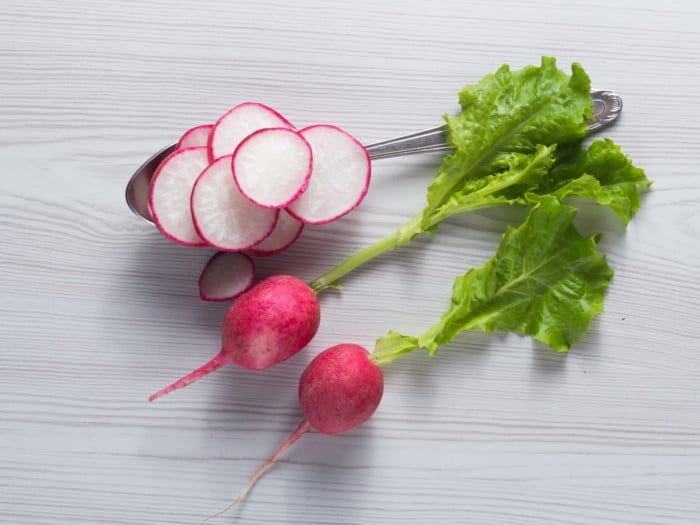While many people throw away radish greens, they may actually be one of the best parts of this root vegetable. Although they are not one of the classic leafy green vegetables, they are packed with important nutrients and can help to fill out a healthy diet.
What are Radish Greens?
Radish greens are the green leaves on stalks on top of the root vegetable (the radish itself). Known scientifically as Raphanus raphanistrum subsp. sativus, radish is an extremely popular vegetable in the world. Different parts of the plant, including the seeds, sprouts, and leaves, can be used both in culinary applications and traditional medical treatments. In some parts of the world, radishes are actually cultivated specifically for their leaves, as they continue to grow while the root develops.
These radish greens have a peppery, earthen taste, making them an interesting addition to any salad and they can also be added to sandwiches or even boiled down and salted for a great side dish. These leaves contain much higher concentrations of certain nutrients than the vegetable itself, so if you are one of the countless people who simply throw away radish greens, change your ways and add this nutritious new food to your diet! [1]
Radish Greens Nutrition
Radish greens are an excellent source of vitamin C, with as much as 6 times more per serving than the radish itself. You will also get a high concentration of vitamin B6, magnesium, phosphorus, iron, calcium, and vitamin A. There are also some unique antioxidants in radish greens, such as sulforaphane indoles, as well as potassium and folic acid. There is also dietary fiber and protein in these greens. [2]

Radishes will grow almost anywhere, in almost any soil, and go from seed to plate in around four weeks flat. Photo Credit: Shutterstock
Radish Greens Benefits
Radish greens, rich in vitamin C, vitamin B6, magnesium, phosphorus, iron, calcium, and vitamin A, aid in skin care, lower cholesterol levels, and regulate digestion.
Skin Care
A number of studies have found that radish greens have quite an impressive antioxidant capacity, meaning that they can fight against oxidative stress and chronic diseases in the body. Having enough antioxidants in your diet will help keep your skin looking young, soothe inflammatory conditions, and even reduce the appearance of skin blemishes and scars. [3]
Aid in Digestion
There is a high amount of dietary fiber found in radish greens, meaning that this vegetable can help keep your bowels regular. By eliminating symptoms of constipation and stimulating peristaltic motion, radish leaves can prevent a number of gastrointestinal problems, improve nutrient uptake efficiency, and even strengthen the immune response of the gut. [4]
Lower Cholesterol
The high level of potassium, iron, vitamin C, and dietary fiber found in radish greens can help strengthen the heart in many ways, from lowering blood pressure and improving circulation to healing and repairing damaged blood vessels and arteries.
Boost Immunity
Radish greens possess far more vitamin C per serving than the root vegetable on which they grow. These leaves are excellent ways to boost your immune health and keep your body free of infections and other foreign agents. [5]
Weight Loss
Radish leaves are low in calories, but high in fiber and are packed with nutrients. This means that a salad of these greens will help you feel full, thus reducing your tendency to snack between meals and overeat. In fact, eating an entire salad of these leaves wouldn’t make a major dent in your caloric intake for the day. [6]
Improve Liver Health
Radish greens are known to detoxify the body by stimulating urination and improving liver function. By helping the body more effectively filter toxins from the blood, these leaves will further relieve unnecessary stress on the immune system.
Regulate Blood Sugar
One of the best parts of a high-fiber diet is the impact it can have on your blood sugar levels. Fiber is able to regulate the release of insulin and glucose in the body, which is important for diabetic patients who suffer from regular spikes and drops in their blood sugar levels. [7]
